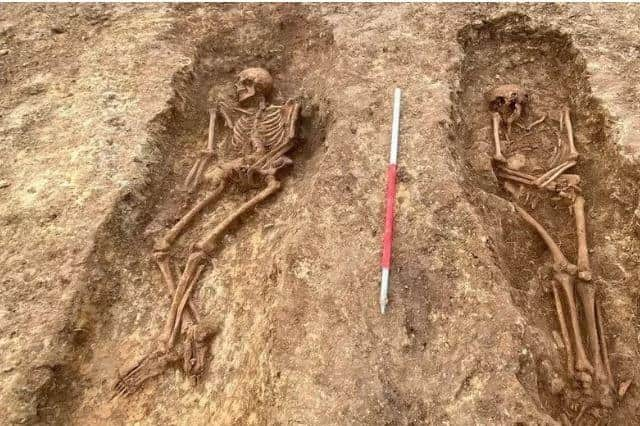Garforth skeletons: 'Once in a lifetime' Roman and Saxon cemetery with remains of 60 people including aristocratic woman found in Yorkshire
The 1,600-year-old burial ground contains the remains of an aristocratic Roman woman in an ancient lead coffin and provides insight into the transition period between the fall of the Roman Empire and the Anglo-Saxon period which followed it.
It was found in the village of Garforth, east Leeds, during an archaeological dig alongside the skeletons of 60 men, women and children who lived in the area 1,000 years ago.
Advertisement
Hide AdAdvertisement
Hide AdDiffering burial customs between the graves offer evidence that the cemetery was used during both time periods.


The find was made last spring, but Leeds City Council and the West Yorkshire Joint Archaeology Services publicly announced it on March 13.
Now the dig is complete, expert analysis of the remains will take place, including carbon dating to establish precise timeframes as well as detailed chemical tests which can determine extraordinary details such as individual diets and ancestry.
Although the exact location remains confidential, the excavation was in part prompted by the previous, nearby discovery of late Roman stone buildings and a small number of Anglo-Saxon-style structures. The site has been earmarked for development and a survey was required.
Advertisement
Hide AdAdvertisement
Hide AdExcavation supervisor Kylie Buxton said: “It is every archaeologist’s dream to work on a ‘once in a lifetime’ site, and supervising these excavations is definitely a career-high for me.


“There is always a chance of finding burials, but to have discovered a cemetery of such significance, at such a time of transition, was quite unbelievable.
“For me it was a particular honour to excavate the high-status lead coffin burial, but it was a great team effort by everyone involved.”
As well as the Roman coffin, burial practices found in the cemetery could indicate early Christian beliefs, as well as Saxon burials, which were accompanied by personal possessions such as knives and pottery.
Advertisement
Hide AdAdvertisement
Hide AdAfter the Romans left Britain, West Yorkshire became part of the Kingdom of Elmet, which was located between the Wharfe and Don valleys, the Vale of York and the Pennines. Elmet remained British/Roman for just over 200 years.
Principle archaeologist David Hunter added: “The presence of two communities using the same burial site is highly unusual and whether their use of this graveyard overlapped or not will determine just how significant the find is. When seen together the burials indicate the complexity and precariousness of life during what was a dynamic period in Yorkshire’s history.
“The lead coffin itself is extremely rare, so this has been a truly extraordinary dig.”
It is hoped the lead coffin can eventually be displayed in an upcoming exhibition at Leeds City Museum which will explore death and burial customs from across the world.
